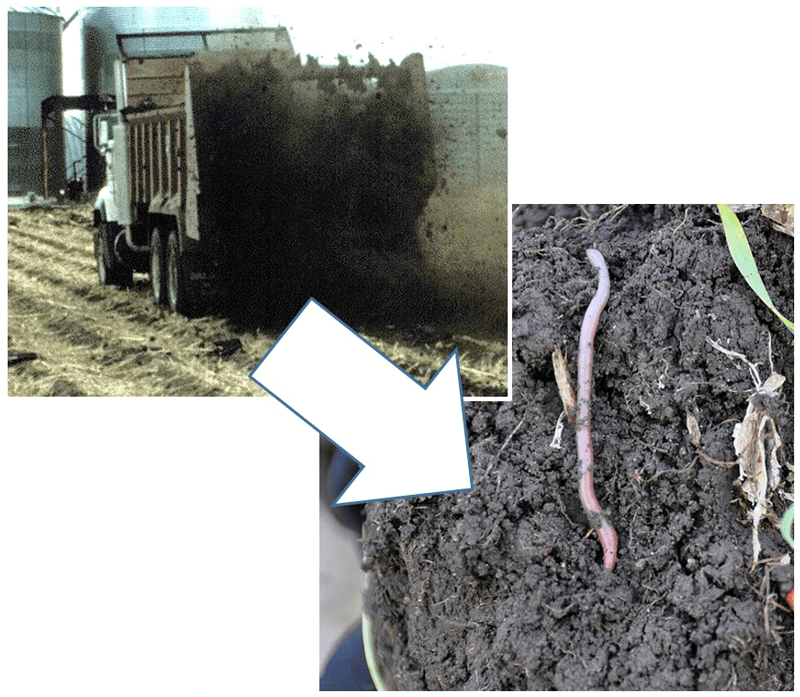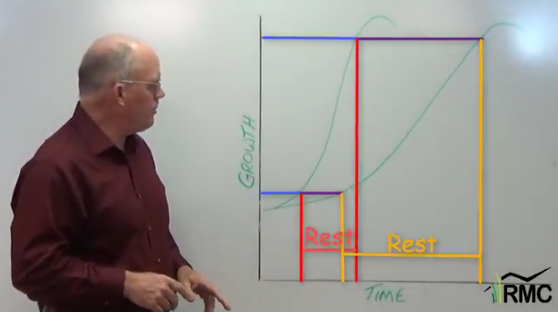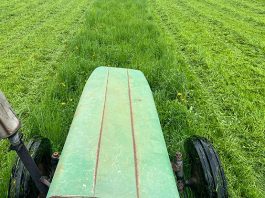Would you like to reduce runoff and soil erosion? Would you benefit from soils that absorb more water, making your pastures more resilient to drought? Do you want to prevent phosphorus contamination of nearby waterways? Then you want stable soil aggregates, and to get there you want manure!
Soil aggregates are individual soil particles that are bound together. Stable soil aggregates provide more pore space for water. Instead of breaking apart, they absorb rainfall and precipitation. Soil aggregates are responsible for increasing soil’s water holding capacity and making it more resistant to erosion. Good aggregate stability also helps in root development, so plants can take up more water and nutrients.


A variety of studies have demonstrated that manure increases formation of larger (macro) and more stable soil aggregates. But how quickly do aggregates form? What kind of manure works best? And are there residual effects of manure on aggregates? Those are the questions that Charles Wortman and Charles Shapiro asked. To find answers, they conducted studies at three different farms in Nebraska on silty loam or silty clay loam soils. They compared the impacts on soil aggregate size of three different kinds of manure: composted beef manure, stockpiled beef manure and swine manure. Feedlot manure solids was applied at 20 to 22 dry tons/acre (roughly 40 to 44 wet tons/ac) and swine manure at 1.2 dry tons/acre (roughly 4800 gallons per acre if manure is 6% solids).
Rick Koelsch, Biological Systems Engineering at the University of Nebraska summarizes what they found about manure’s benefits:
Soil Aggregates Increased
Water stable large macro-aggregates were increased 2 to 3 times for manured soils compared to commercially fertilized soils. All macro-aggregates increased by 10 to 20% for manured vs commercially fertilized soils (see Figure 2). This increase was consistent across all soil types evaluated.

Why is this happening? A Michigan State Extension publication suggests that “When manure … is added to the soil it is quickly colonized by millions of bacteria…bacteria producing large quantities of polysaccharides. These polysaccharides function like sticky glue in the soil and can actually stick particles together into aggregates.”
All Manures Increased Aggregates
The formation of macro-aggregates occurred with all manures with some advantage for compost and similar effects for raw feedlot manure and swine slurry. The swine manure’s solids application rate was only 6% of that of feedlot manure but still achieved very similar benefits. This might suggest that achieving the physical soil property benefits may be more dependent upon the rapid growth in soil micro-biology and less dependent on the total solids in the manure.
Aggregates Form Quickly and Persist
Water-stable macro-aggregates formed within 15 days after manure application, persisted over a 7 month observation period, but were no longer found on a separate tilled site that was without compost for 5 years. The effect of manure or compost on macro-aggregate formation soon after application (first observation made at 15 days) suggests an immediate value from manure application. The study observed this benefit lasted at least 7 months but disappearing five years later. Other research has suggested this benefit lasts longer in no-till fields.
Phosphorus Concentrates in Aggregates
Phosphorus (P) was observed to concentrate in the water-stable macro-aggregates at levels twice as great in the large aggregates as the whole soil P level. This may provide additional protection resulting from manure for holding P in the soil and reducing P in runoff. However, previous research has documented that P movement from cropland is connected to soil surface P levels. Managing manure to keep soil P levels low, near levels required for optimum crop production, remains our best practice for protecting water quality. But manure’s large aggregate building response and P concentration in those large aggregates help protect water quality.
The take home message is that manure improves the physical characteristics of our soils in ways that commercial fertilizers can’t. These improvements to the soil aggregates opens the possibility for environmental and economic benefits. We’ll talk more about this in upcoming articles.





The amazing power of poop to build stable soil.
Comments are closed.